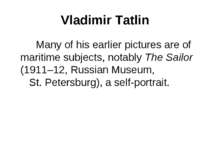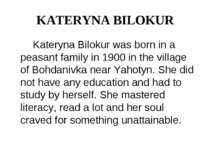Презентація на тему:
Ukrainian Painting
Завантажити презентацію
Ukrainian Painting
Завантажити презентаціюПрезентація по слайдам:
Ukrainian Painting Galician School of Icon Painting With the rise of the Principality of Galicia-Volynia principality in the 13th century, a Galician tradition of icon painting arose. There was very little pressure on icon painters from Church authorities and they were free to follow their own artistic intuition rather than rigid canons in creating icons. Instead of the gold background, they often introduced red or green backgrounds.
The chief icon painting schools in Galicia were those of Peremyshl and Lviv. Each of them had many branches scattered throughout the Carpathian Mountains region as far west as Transcarpathia. Numerous samples of their work dating back to the early 15th century have been preserved.
Taras Schevchenko Born into a serf family in the village of Moryntsi Shevchenko was orphaned at the age of eleven. He loved to draw at every opportunity.
Taras Schevchenko Shevchenko went with his Russian aristocrat lord Pavel Engelhardt to Vilna (1828–31) and then to Saint Petersburg. Engelhardt noticed Shevchenko's artistic talent and apprenticed him in Vilna to Jan Rustem, then in Saint Petersburg to Vasiliy Shiryaev for four years.
Taras Schevchenko There he met the famous painter and professor Karl Bryulov, who donated his portrait of the Russian poet Vasily Zhukovsky as a lottery prize, whose proceeds were used to buy Shevchenko's freedom on May 5, 1838.
Taras Schevchenko In the same year Shevchenko was accepted as a student into the Academy of Arts in the workshop of Karl Bryulov. The next year he became a resident student at the Association for the Encouragement of Artists.
Taras Schevchenko At the annual examinations at the Imperial Academy of Arts, Shevchenko was given a Silver Medal for a landscape. In 1840 he again received the Silver Medal, this time for his first oil painting, The Beggar Boy Giving Bread to a Dog.
Taras Schevchenko In September 1841, Shevchenko was awarded his third Silver Medal for The Gypsy Fortune Teller.
Taras Schevchenko In 1844, distressed by the condition of Ukrainian regions in the Russian Empire, Shevchenko decided to capture some of his homeland's historical ruins and cultural monuments in an album of etchings, which he called Picturesque Ukraine. On March 22, 1845, the Council of the Academy of Arts granted Shevchenko the title of an artist.
Taras Schevchenko With the exception of some short periods of his exile, the enforcement of the Tsar's ban on his creative work was lax. The poet produced several drawings and sketches as well as writings while serving and traveling on assignment in the Ural regions and areas on modern Kazakhstan.
Taras Schevchenko Taras Shevchenko spent the last years of his life working on new poetry, paintings, and engravings, as well as editing his older works. But after his difficult years in exile his final illness proved too much. Shevchenko died in Saint Petersburg on March 10, 1861, the day after his 47th birthday.
Arkhip Kuindzhi Arkhip Kuindzhi was born in January 1841 in Mariupol, but he spent his youth in the city of Taganrog. He grew up in a poor family, and Arkhip was six years old when he lost his parents, so that he was forced to make his living, working at the church building site, grazing domestic animals, and working at the corn merchant's shop.
Arkhip Kuindzhi During the five years, from 1860 to 1865, Arkhip Kuindzhi worked as retoucher in the photo studio of Isakovich in Taganrog. Kuindzhi tried to open his own photographer's studio, but without success. After that Kuindzhi left Taganrog for Saint Petersburg.
Arkhip Kuindzhi He studied painting mainly independently and in St. Petersburg Academy of Arts from 1868. The full member since 1893.
Arkhip Kuindzhi He was co-partner of mobile art exhibitions Peredvizhniki, a group of Russian realist artists who in protest to academic restrictions formed an artists' cooperative, which evolved into the Society for Traveling Art Exhibitions. During this early period Kuinczhy felt Ivan Aivazovsky's influence.
Arkhip Kuindzhi In 1872 the artist left the academy and worked as a freelancer. The painting Na ostrove Valaam (On the Valaam Island) was the first artwork, which Pavel Tretyakov acquired for his art gallery.
Arkhip Kuindzhi In 1873, Kuindzhi exhibited his painting The Snow, which received the bronze medal at the International Art Exhibition in London in 1874. In the middle of 1870s he created a number of paintings in which the landscape motif was designed for concrete social associations in the spirit of Peredvizhniki.
Arkhip Kuindzhi Using light effects and intense colors shown in main tones, he depicted the illusion of illumination (The Ukrainian night, 1876; Birch Grove, 1879; After a thunderstorm, 1879). His later works are remarkable by decorative effects of color building.
Arkhip Kuindzhi Kuindzhi lectured at the St.Petersburg Academy of arts (Professor since 1892; professor-head of landscape workshop since 1894; but he was fired in 1897 for support of student's protests). Among his students were artists such as Arkady Rylov, Nicholas Roerich, Konstantin Bogaevsky, and others. Kuindzhi initiated creation of the Society of artists in 1909.
Vasylkivsky grew up in an environment conducive to his development as an artist. He spent his childhood in the picturesque surroundings of Izyum.
Serhii Vasylkivsky Vasylkivsky's father was a writer and taught his son the aesthetics of proper calligraphy line, while his mother through her folk songs set the foundation which provided the inspiration for Vasylkivsky's art later in life. Lastly Dmytro Bezperchy, an art teacher at the Kharkiv gymnasium and a student of Karl Bryulov, provided Vasylkivsky the necessary artistic support.
Serhii Vasylkivsky Contrary to his father's wishes, Vasylkivsky left for the St. Petersburg Academy of Fine Arts. While there, Vasylkivsky was supervised by well known landscape painters Volodymyr Orlovsky and Mykhailo Klodt.
Serhii Vasylkivsky His education was supplemented with travelling exhibitions and trips back home. Upon graduation in 1885 he travelled to Europe and North Africa on a scholarship from the Academy, painting places he visited from Spain to Germany and Egypt.
Serhii Vasylkivsky In Paris, Vasylkivsky became fascinated with the School of Barbizon. By the time, he returned to the Academy, Vasylkivsky brought with him an exhibition of almost 50 art works. Critics praised these paintings, calling them "miniature pearls".
Serhii Vasylkivsky The paintings reflected the influence of Barbizon's panoramic depiction of space, the sky and the silvery atmosphere of "Piere Corot". Vasylkivsky retained these characteristics in his Ukrainian landscapes.
Serhii Vasylkivsky After settling in Kharkiv in 1888, he was active in Ukrainian artistic circles and headed the architectural and art society there. Vasylkivsky died at age 62 in Kharkiv.
Serhii Vasylkivsky A typical Vasylkivsky theme is an armed horse-mounted cossack in steppes or a group of cossacks on sentry duty, travelling or resting.
Serhii Vasylkivsky Vasylkivsky left behind almost 3,000 works of realist and impressionist art, sketches, drawings, a great number of which were lost during World War II. He was the first, after Taras Shevchenko, to draw upon subject matter from Ukraine's past and completed a number of works on historical and ethnographic themes.
Serhii Vasylkivsky Together with Mykola Samokysh and ethnographer and archaeologist Dmytro Yavomytsky he collaborated on the album "From Ukrainian Antiquity" (1900). Albums of Vasylkivsky's works were published in 1970 and 1987.
Ivan Aivazovsky Ivan Aivazovsky was born in the family of a merchant of Armenian origin in the town of Feodosia, the Crimea. His parents were under strained circumstances and he spent his childhood in poverty.
Ivan Aivazovsky With the help of people who had noticed the talented youth, he entered the Simpheropol gymnasium, and then the St. Petersburg Academy of Arts, where he took the landscape painting course and was especially interested in marine landscapes.
Ivan Aivazovsky In the autumn of 1836 Aivazovsky presented 5 marine pictures to the Academic exhibition, which were highly appreciated. In 1837, Aivazovsky received the Major Gold Medal for Calm in the Gulf of Finland (1836) and The Great Roads at Kronstadt (1836).
Ivan Aivazovsky During the period of 1840-1844 Aivazovsky, as a pensioner of the Academy of Arts, spent time in Italy, traveled to Germany, France, Spain, and Holland. He worked much and had many exhibitions, meeting everywhere with success.
Ivan Aivazovsky His works were highly appreciated by J.W.M. Turner, a prominent English landscape and marine painter.
Ivan Aivazovsky In the course of his work, Aivazovsky evolved his own method of depicting the motion of the sea – from memory, without preliminary sketches, limiting himself to rough pencil outlines. Aivazovsky’s phenomenal memory and romantic imagination allowed him to do all this with incomparable brilliance.
Ivan Aivazovsky When in 1844 the artist returned to St. Petersburg, he was awarded the title of Academician, and became attached to the General Naval Headquarters.
Ivan Aivazovsky From 1846 to 1848 he painted several canvases with naval warfare as the subject; the pictures portrayed historical battles of the Russian Fleet The Battle of Chesme (1848), The Battle in the Chios Channel (1848), Meeting of the Brig Mercury with the Russian Squadron... (1848).
Ivan Aivazovsky Towards the 1850s the romantic features in Aivazovsky’s work became increasingly pronounced. This can be seen quite clearly in one of his best and most famous paintings The Ninth Wave (1850) and also in Moonlit Night (1849), The Sea. Koktebel. (1853), Storm (1854) and others.
Ivan Aivazovsky The process, which determined the development of Russian art in the second half of the 19th century, also affected Aivazovsky.
Ivan Aivazovsky The artist's greatest achievement of this period is The Black Sea (1881), a picture showing the nature of the sea, eternally alive, always in motion. Other important pictures of the late years are The Rainbow (1873), Shipwreck (1876), The Billow (1889), The Mary Caught in a Storm (1892).
Ivan Aivazovsky Aivazovsky left more than 6000 pictures, which are of very different value. There are masterpieces and there are very timid works. He failed to draw landscapes, could not draw a man.
Ivan Aivazovsky He spent much money for charity, especially for his native town, he opened in Feodosia the first School of Arts (in 1865), then the Art Gallery (in 1889). He was a member of Academies of Stuttgart, Florence, Rome and Amsterdam.
Ivan Aivazovsky Aivazovsky was not just a professional marine painter. He knew the sea and loved it sincerely. Although he turned occasionally to other art forms such as landscape and portraiture, these were only brief departures from his chosen genre to which he remained faithful all his life.
Ivan Aivazovsky Aivazovsky died on 19 April (2 May New Style) 1900, on the verge of the twentieth century, leaving unfinished a picture he had begun that same day.
Mykola Pymonenko Pymonenko was born on March 9, 1862 in Priorka (a suburb of Kyiv). Prominent Ukrainian realist painter was a full member of the Saint Petersburg Academy of Arts from 1904. After studying at the Kyiv Drawing School (1878–82) and the Saint Petersburg Academy of Arts he taught at the Kyiv Drawing School (1884–1900) and Kyiv Art School (1900–6).
Mykola Pymonenko He took part in the exhibitions of the Society of South Russian Artists (1891–6) and Peredvizhniki society (from 1893) and became a member of the latter society in 1899. In 1909 he was elected a member of the Paris International Association of Arts and Literatures.
Mykola Pymonenko Pymonenko produced over 700 genre scenes, landscapes and portraits, many of which were reproduced as postcards. They include Wedding (The Kyiv Gubernia) (1891), Girls Fortune-telling (1893), Kyiv Flower Seller (1897), At the Market (1898), Victim of Fanaticism (1899), Before the Storm (1906), Hay Gathering in Ukraine (1907), Meeting a Compatriot (1908), Young People (At the Well) (1909), Hopak (1908; bought by the Louvre), and Paschal Matins (1910).
Mykola Pymonenko Pymonenko also created illustrations for several of Taras Shevchenko's narrative poems, and in the 1890s he took part in painting the murals in Saint Volodymyr's Cathedral in Kyiv.
Mykola Pymonenko Pymonenko was widely acclaimed in the Russian Empire. Books about him have been written by Yakiv Zatenatsky (1955) and P. Hovdia (1957), and an album of his works was published in Kyiv in 1983.
Kazimir Malevich (February 23, 1879 – May 15, 1935) Kazimir Malevich was a Russian painter and art theoretician of Polish descent, pioneer of geometric abstract art and the originator of the Avant-garde Suprematist movement. Recently Ukrainian art historians established the precise birthdate of the artist: February 23, 1879.
Kazimir Malevich Kazimir Malevich was born near Kiev. His father was the manager of a sugar factory. His family moved often and he spent most childhood in the villages of Ukraine amidst sugar-beet plantations, far from centers of culture. Until age 12 he knew nothing of professional artists, though art had surrounded him in childhood.
Kazimir Malevich Malevich studied drawing in Kiev from 1895 to 1896. In 1904, after the death of his father, he moved to Moscow where he studied at the Moscow School of Painting, Sculpture and Architecture from 1904 to 1910 and in the studio of Fedor Rerberg in Moscow (1904–1910).
Kazimir Malevich In 1911 he participated in the second exhibition of the group Soyuz Molodyozhi in St. Petersburg, together with Vladimir Tatlin and, in 1912, the group held its third exhibition, which included works by Aleksandra Ekster, Tatlin and others.
Kazimir Malevich In the same year he participated in an exhibition by the collective Donkey's Tail in Moscow. By that time his works were influenced by Russian avant-garde painters who were particularly interested in Russian folk art called Lubok.
Kazimir Malevich After the exhibition of Aristarkh Lentulov's paintings, opened in Moscow in 1913, Malevich immediately absorbed the cubist principles and began using them in his works. Already in the same year the Cubo-Futurist opera Victory Over the Sun with Malevich's stage-set became a great success.
Kazimir Malevich In 1914 Malevich exhibited his works in the Salon des Independants in Paris In 1915, Malevich laid down the foundations of Suprematism. He published his manifesto From Cubism to Suprematism.
Kazimir Malevich In 1916-1917 he participated in exhibitions of the Jack of Diamonds group in Moscow together with Nathan Altman, David Burliuk and A. Ekster, among others. Famous examples of his Suprematist works include Black Square (1915) and White on White (1918).
Kazimir Malevich In 1918, Malevich decorated a play Mystery Bouffe by Vladimir Mayakovskiy produced by Vsevolod Meyerhold. He was also interested in aerial photography and aviation, which led him to abstractions inspired by or derived from aerial landscapes.
Kazimir Malevich After the October Revolution, Malevich became a member of the Collegium on the Arts of Narkompros, the commission for the protection of monuments and the museums commission (all from 1918-1919).
Kazimir Malevich He taught at the Vitebsk Practical Art School (1919–1922) Leningrad Academy of Arts (1922–1927) Kiev State Art Institute (1927–1929) House of the Arts in Leningrad (1930)
Kazimir Malevich He wrote the book The World as Non-Objectivity (Munich 1926; English trans. 1959) which outlines his Suprematist theories. In 1927, he traveled to Warsaw and then to Berlin and Munich for a retrospective which finally brought him international recognition.
Kazimir Malevich The Stalinist regime turned against formes of abstractism, considering them a type of “bourgeois" art, that could not express social realities. As a consequence, many of his works were confiscated and he was banned from creating and exhibiting similar art.
Kazimir Malevich Malevich's work only recently reappeared in art exhibitions in Russia after a long absence. Since then art followers have labored to reintroduce the artist to Russian lovers of painting. A book of his theoretical works with an anthology of reminiscences and writings has been published.
Kazimir Malevich Malevich died of cancer in Leningrad on May 15, 1935. On his deathbed he was exhibited with the black square above him and a white cube decorated with a black square was placed on his tomb.
Alexsandra Ekster Alexsandra Ekster was a Russian-Ukrainian painter (Cubo-Futurist, Suprematist, Constructivist), designer, and one of the founders of Art Deco. She was born in Belostok, (now Poland) to a wealthy Belarusian family. Her father, Aleksandr Grigorovich, was a wealthy businessman.
Alexsandra Ekster Young Aleksandra received an excellent private education, she studied languages, music, art, and took private drawing lessons.She studied at Kiev art school, then in 1907 attended Académie de la Grande Chaumière in Montparnasse, Paris.
Alexsandra Ekster From 1908 to 1924 she intermittently lived in Kiev, Saint Petersburg, Odessa, Paris, Rome and Moscow. In Paris, Aleksandra Ekster was a personal friend of Pablo Picasso and Georges Braque, who introduced her to Gertrude Stein.
Alexsandra Ekster Her painting studio in the attic at 27 Funduklievskaya Street was a rallying stage for Kiev's intellectual elite. There she was visited by poets and writers, such as Anna Akhmatova, Ilia Ehrenburg, and Osip Mandelstam, dancers Bronislava Nijinska and Elsa Kruger, as well as many artists Alexander Bogomazov, Wladimir Baranoff-Rossine, and students, such as Grigori Kozintsev, Sergei Yutkevich, and Aleksei Kapler among many others.
Alexsandra Ekster In 1908 she participated in an exhibition together with members of the group Zveno (Link). In 1914, Ekster participated in the Salon des Indépendants exhibitions in Paris, together with Kazimir Malevich, Alexander Archipenko, Vadym Meller, Sonia Delaunay-Terk and other French and Russian artists. In that same year she participated in the International Futurist Exhibition in Milan. In 1915 she joined the group of avant-garde artists Supremus.
Alexsandra Ekster Ekster absorbed from many sources and cultures in order to develop her own original style. In 1915-1916 she worked in the peasant craft cooperatives in the villages Skoptsi and Verbovka.
Alexsandra Ekster Later she founded a teaching and production workshop (MDI) in Kiev (1918–1920). Also during this period she was one of the leading names of Alexander Tairov's Chamber Theatre.
Alexsandra Ekster In 1919 together with other avant-garde artists Kliment Redko and Nina Genke-Meller she decorated the streets and squares of Kiev and Odessa in abstract style for Revolution Festivities. She worked as a costume designer in a Ballet Studio.
Alexsandra Ekster In 1921 she became a director of the elementary course Color at the Higher Artistic-Technical Workshop in Moscow, a position she held until 1924. Her work was displayed alongside that of other constructivist artists at the 5x5=25 exhibition held in Moscow in 1921.
Alexsandra Ekster In 1924, Aleksandra Ekster and her husband emigrated to France and settled in Paris. Initially she became a Professor at the Academie der Moderne in Paris. From 1926 to 1930 Ekster was a professor at Fernand Léger's Académie d'Art Contemporain.
Alexsandra Ekster In 1933 she began creating extremely beautiful and original illuminated manuscripts (gouache on paper), which are beyond doubt the most important works of the last phase of her life. In 1936 she participated in the exhibition Cubism and Abstract Art in New York and went on to have solo exhibitions in Prague and in Paris.
Alexsandra Ekster She was a book illustrator for the publishing company Flammarion in Paris from 1936 until her death in the Paris suburb of Fontenay-aux-Roses.
Vladimir Tatlin Vladimir Tatlin was born on December 16, 1885 in Kharkov. He was a Russian sculptor and painter, designer, and maker of abstract constructions, the founder of Constructivism. He ran away to sea at the age of 18 and until 1914 combined painting with the life of a merchant seaman.
Vladimir Tatlin Many of his earlier pictures are of maritime subjects, notably The Sailor (1911–12, Russian Museum, St. Petersburg), a self-portrait.
Vladimir Tatlin From 1910 he showed work at several avant-garde exhibitions in Russia In 1914. Tatlin visited Berlin and Paris. He haunted Picasso's studio and on his return to Russia began making a series of abstract Painted Reliefs, Relief Constructions, and Corner Reliefs inspired by Picasso's sculptural experiments.
Vladimir Tatlin Very few of these revolutionary works survive, most being known only from photographs; it appears that they were made of a variety of materials — tin, glass, wood, plaster, etc.
Vladimir Tatlin After the October Revolution of 1917, Tatlin's constructions made from ‘real materials in real space’ were felt to be in accordance with the new ‘culture of materials’ and he threw himself wholeheartedly into the demand for socially oriented art.
Vladimir Tatlin In 1919 he was commissioned to design the Monument to the Third International. The huge monument—in the form of a leaning, openwork, spiral tower in iron and glass—was intended for a position in the centre of Moscow.
Vladimir Tatlin It was to be both functional and symbolic, housing various offices of the revolutionary government and including such features as an immense projector for throwing propaganda images onto clouds. A model was exhibited in December 1920 at the exhibition of the VIIIth Congress of the Soviets.
Vladimir Tatlin Gabo condemned the design as impracticable and it was never executed (it was intended to be much bigger than the Eiffel Tower), but it is recognized as the outstanding symbol of Soviet Constructivism. The original model has been destroyed, but there is a reconstruction in the Moderna Museet, Stockholm.
Vladimir Tatlin He was active in teaching and administration, and his own work was mainly in the field of applied art, designing furniture, workers' clothes, etc. In the late 1920s and early 1930s he devoted his energies to designing a glider, which he called Letatlin.
Vladimir Tatlin From the 1930s his main activity was theatre design. Tatlin completed his constructivist stage set and costume designs for Zangezi for a memorial production in honor of his friend. His later years were spent in lonely obscurity. In 1948 the Communist Party declared him an ‘enemy of the people’.
Vladimir Tatlin Under Socialist Realism he practised mainly stage design (a lifelong vocation), and died in relative obscurity.
KATERYNA BILOKUR Kateryna Bilokur was born in a peasant family in 1900 in the village of Bohdanivka near Yahotyn. She did not have any education and had to study by herself. She mastered literacy, read a lot and her soul craved for something unattainable.
KATERYNA BILOKUR She had been very gifted in painting since her childhood. She began painting portraits of her relatives and villagers. In her later works Kateryna would extol a flower — the beauty of the land.
KATERYNA BILOKUR Her paintings derived from the life-giving source of folk creativity based on songs, legends, tales and decorative arts. She admired the patterns on household utensils, Ukrainian clothes, towels, but her tender poetic soul was mostly charmed by flowers that blossomed around her house, in the gardens, meadows and fields.
KATERYNA BILOKUR Kateryna Bilokur first exhibited her paintings in Poltava and Kyiv in1940-41. She was warmly welcomed by her colleagues — Ukrainian artists and her way to recognition started.
KATERYNA BILOKUR But the Great Patriotic War began and her eleven paintings were burnt in Poltava museum. She lived through hardships and difficulties of this war. The 1950s saw another raise in her artistic career. Her works were exhibited in Moscow and other cities.
KATERYNA BILOKUR The public was charmed by her pictures "Peonies", "Still life with bread", "Breakfast", "Flowers and walnuts" and others.
KATERYNA BILOKUR But a well-known painter Kateryna Bilokur had lived all her life in pain and poverty; she did not have any family or children. The grave illness tortured her, besides she had to look after her sick mother.
KATERYNA BILOKUR Great fame came later, after her death. Her works are exhibited in museums in Ukraine and abroad, a picture gallery bearing her name was open in Yahotyn, a street was named after her in Kyiv.
KATERYNA BILOKUR A lot of books devoted to her life and works are published in many languages. The Bilokur Prize Fund was founded for praising the most talented artists and painters.
Tetyana Yablonska Yablonska was born in Smolensk. She studied at the Kiev State Institute of Art (1941), the studio of Fedir Krychevsky. She worked very productively until the very end of her life, reportedly painting her last pastel etude on the very day of her death.
Tetyana Yablonska Her early vital pictures are devoted to work and a life of Ukrainian people ("Bread", 1949). She has passed to generalizing images of the nature, differing a subtlety of plastic and color rhythms ("Anonymous heights", 1969; "Flax", 1977).
Tetyana Yablonska Yablonska’s pictures always focused on the everyday life of ordinary people: daily routine scenes, portraits of family members, and self-portraits in a home surrounding.
Tetyana Yablonska Yet the artist would take a special, unconventional, attitude to what surrounded her. This is reflected in her works: there is nothing artificial or phony in them. They all carry extraordinary warmth and the feeling of being delighted with the world’s beauty.
Tetyana Yablonska Of special interest in the artist’s works are colors which speak in unison with other details of the picture but still express something of their own in a special language that only they can speak.
Tetyana Yablonska They are organic, immaterial, solid and profound. The color conveys the spiritual substance of her works and is their main component.
Tetyana Yablonska Yablonska was awarded the honorary title "Peoples' Artists of the USSR" in 1982, "Artist of Year" (UNESCO) in 1997, "Woman of Year" (International Biography Centre, Cambridge) in 2000.
Tetyana Yablonska She was the winner of the USSR State Prize (Stalin prize: 1949, 1951 and State Prize: 1979), winner of the Schevchenko state prize of Ukraine (1998).
Схожі презентації
Категорії
































































































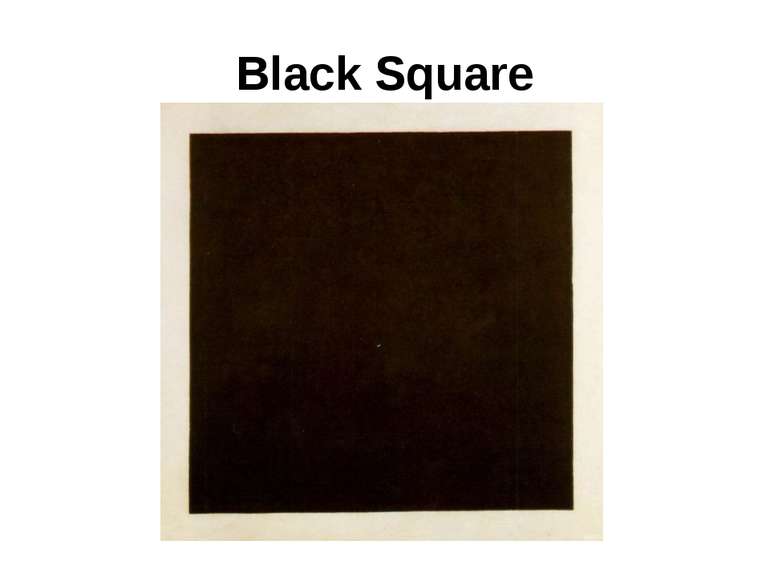

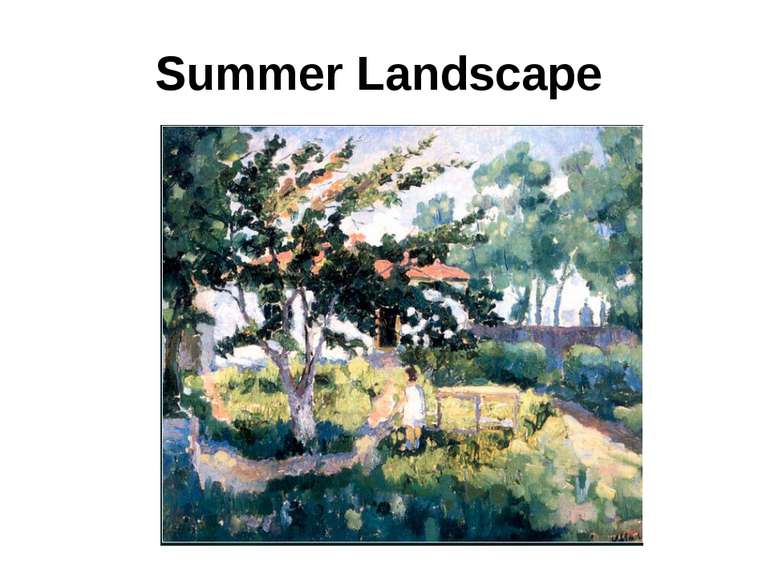

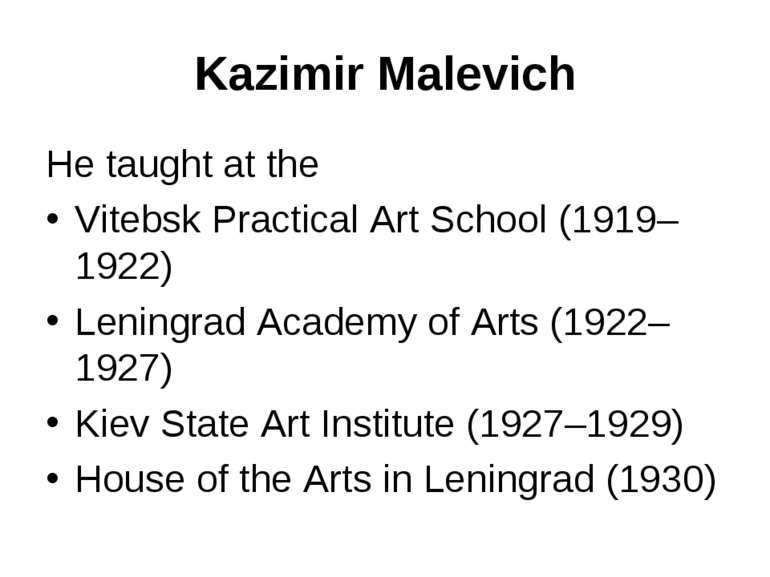






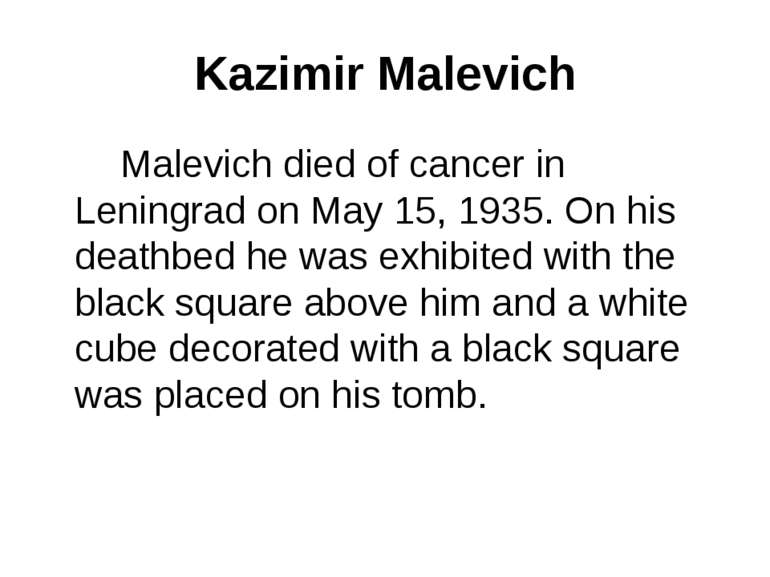



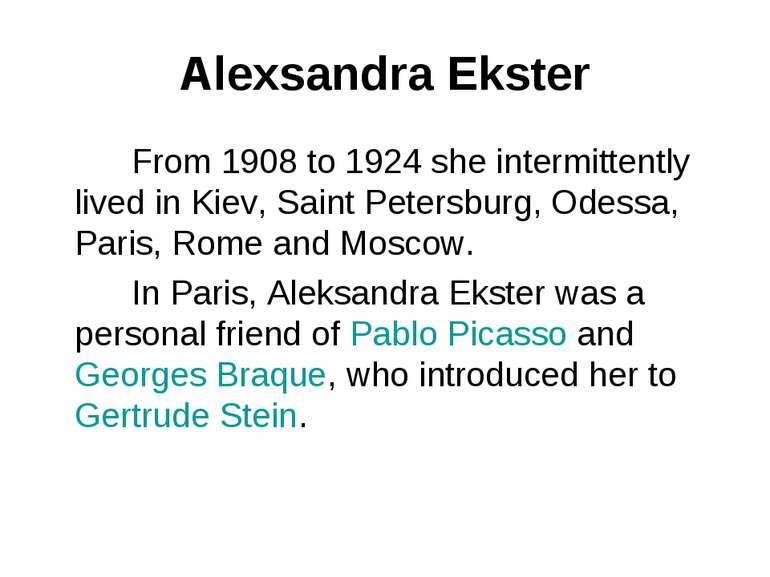





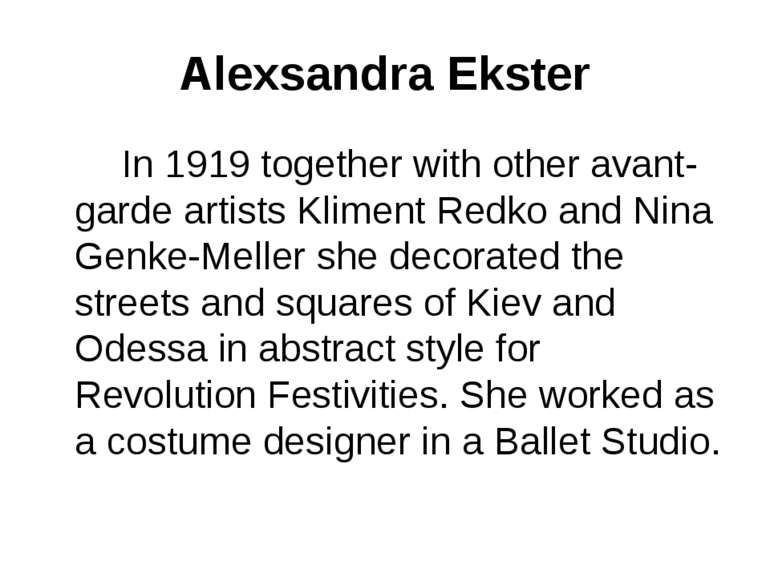
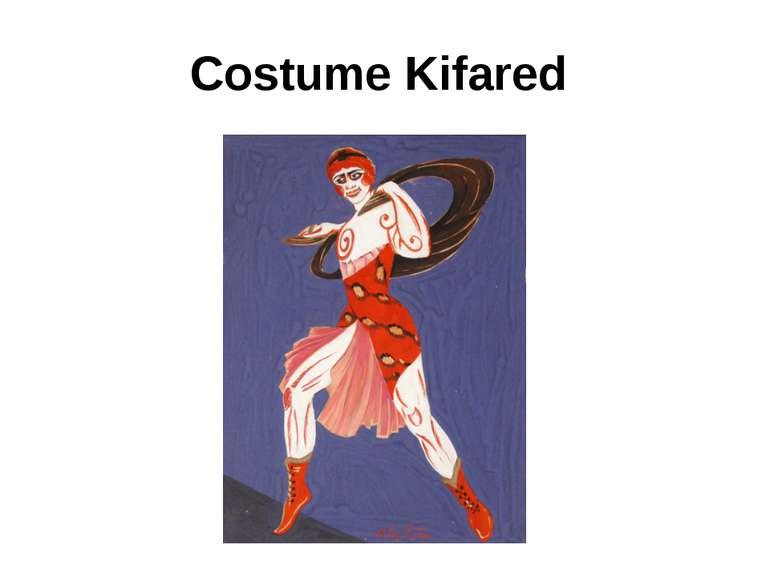



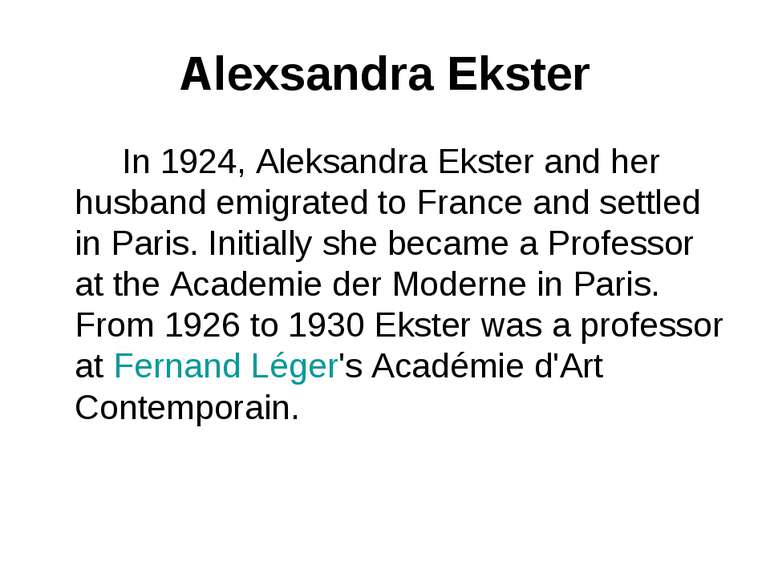

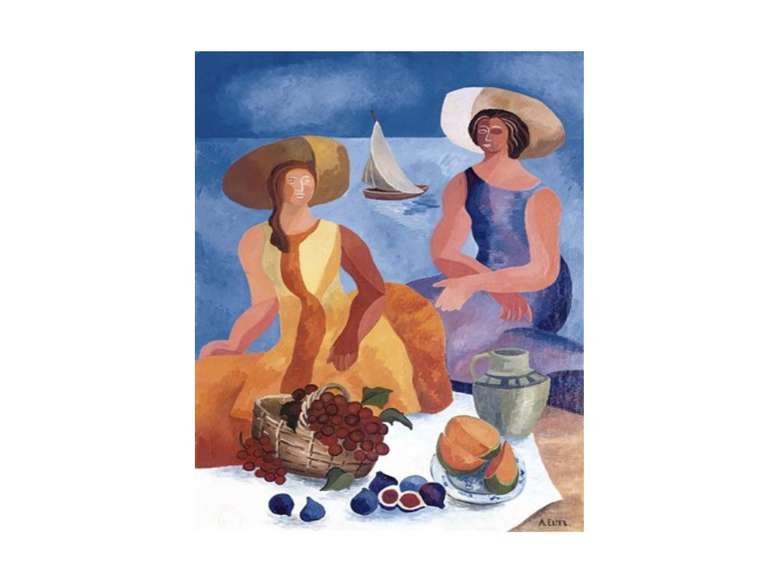

![Vladimir Yevgrafovich Tatlin (December 28 [O.S. December 16] 1885 – May 31, 1... Vladimir Yevgrafovich Tatlin (December 28 [O.S. December 16] 1885 – May 31, 1...](https://svitppt.com.ua/images/38/37735/770/img125.jpg)
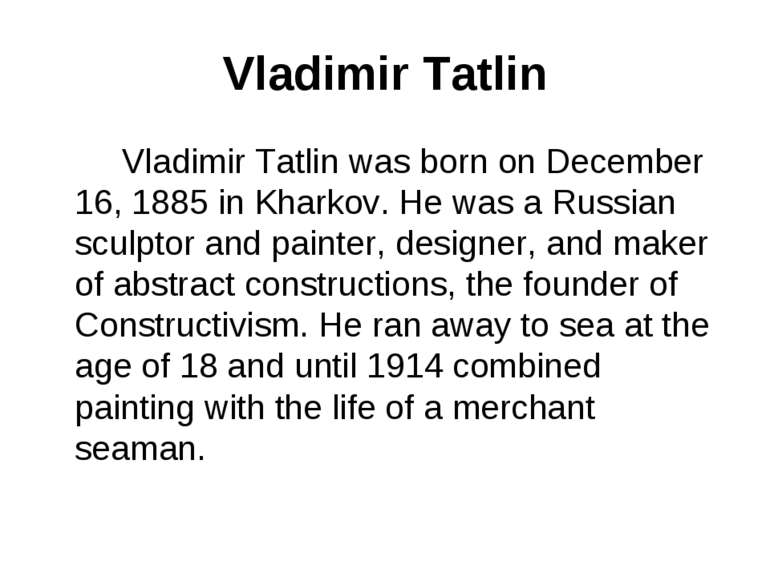

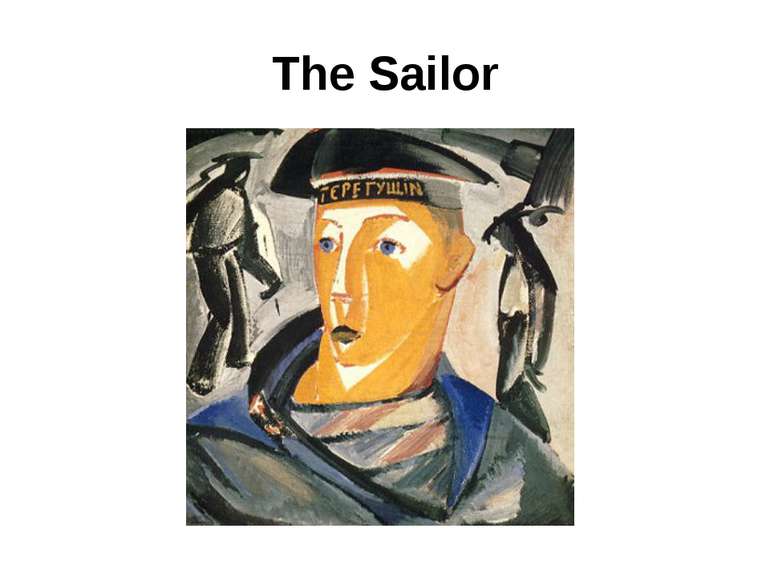
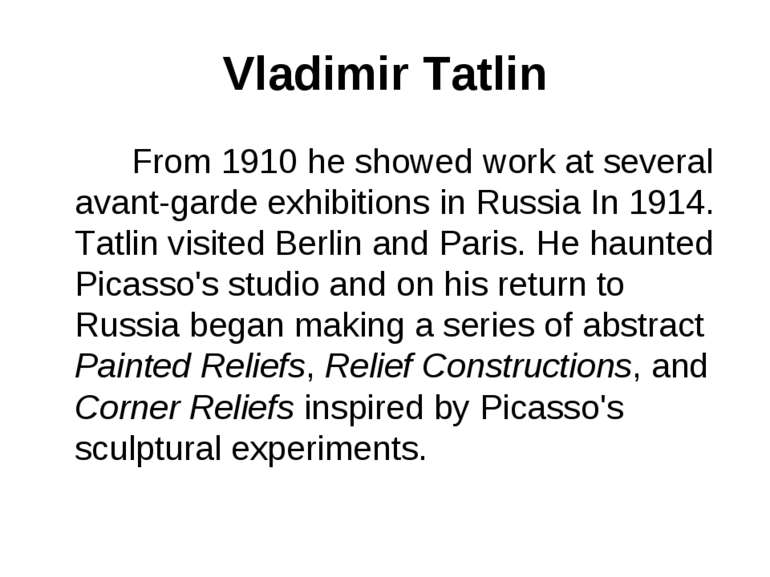
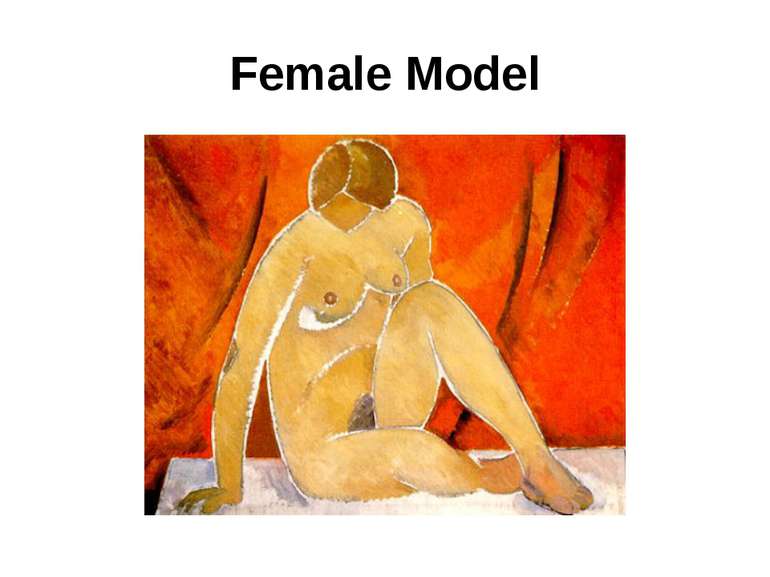
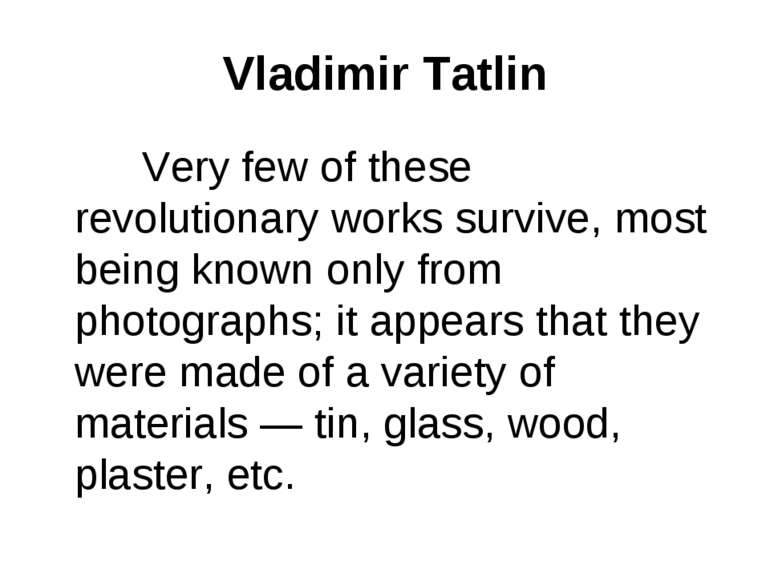
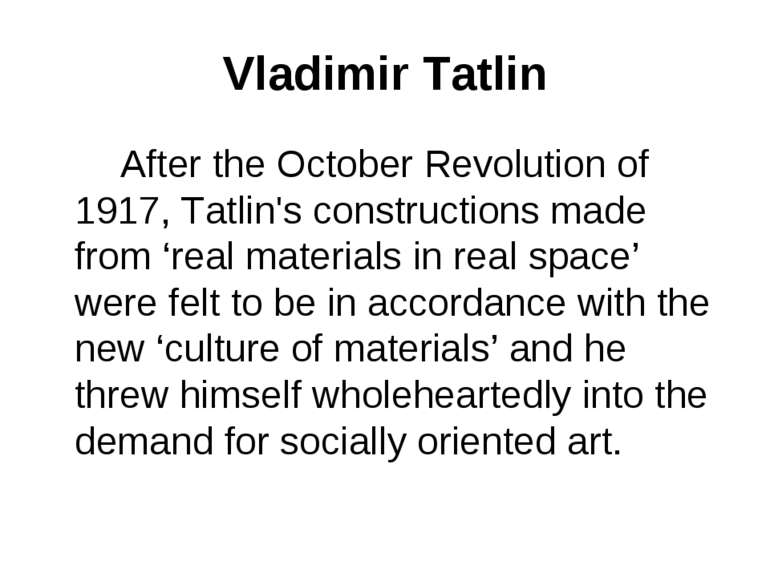
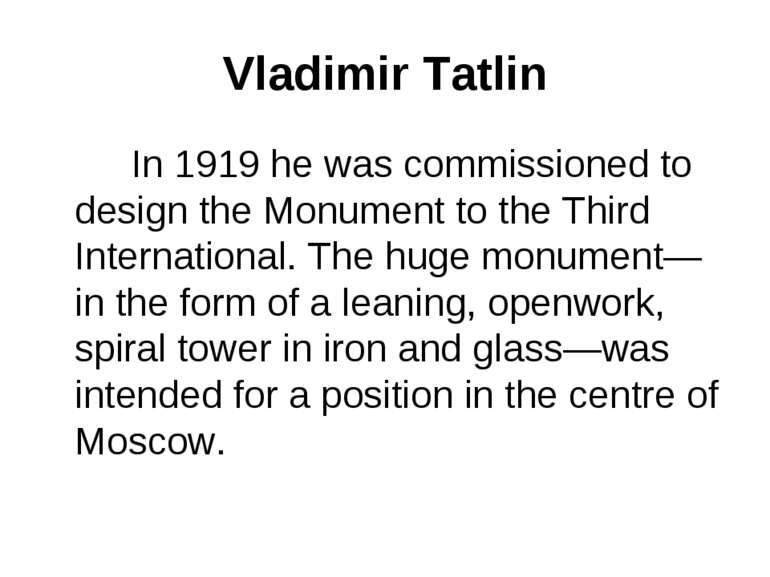
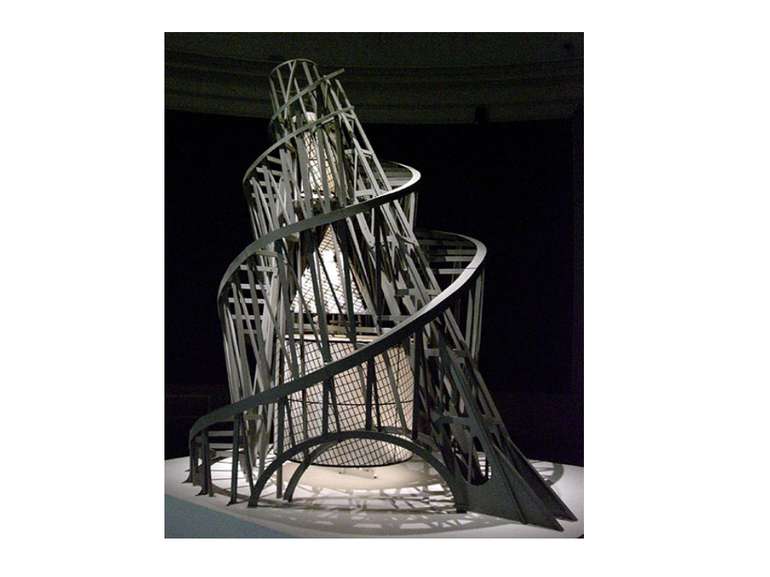
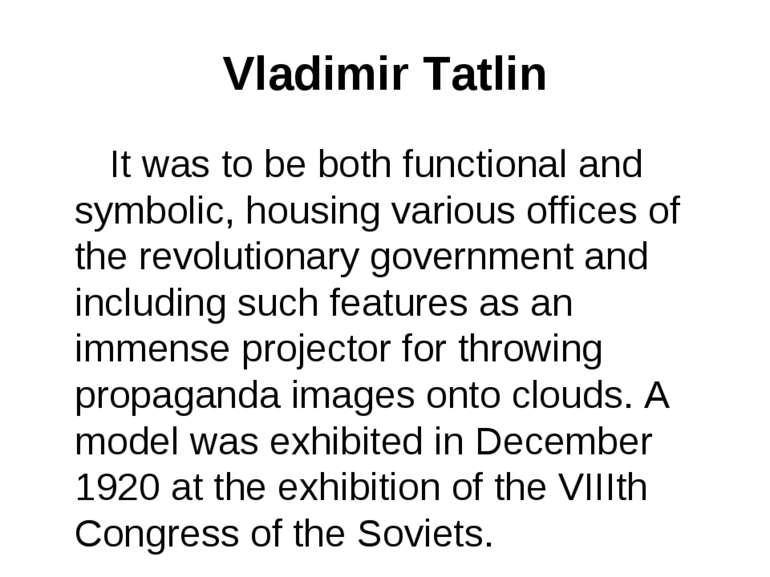
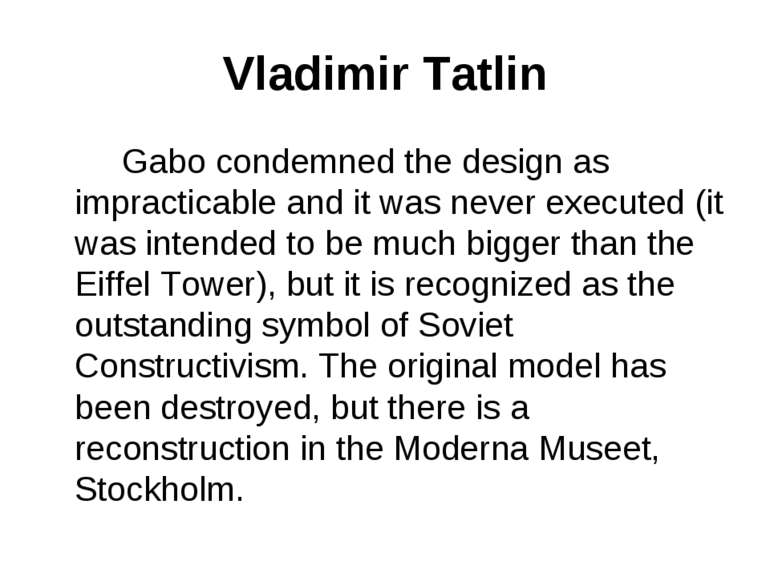
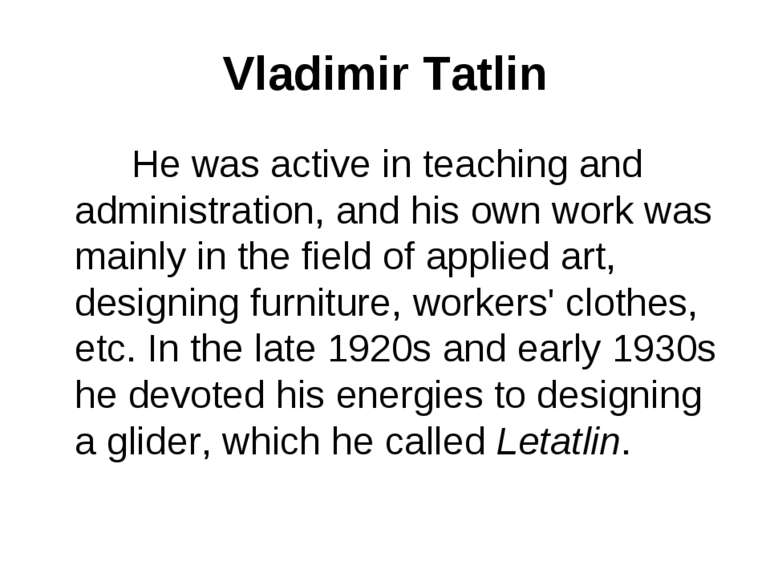
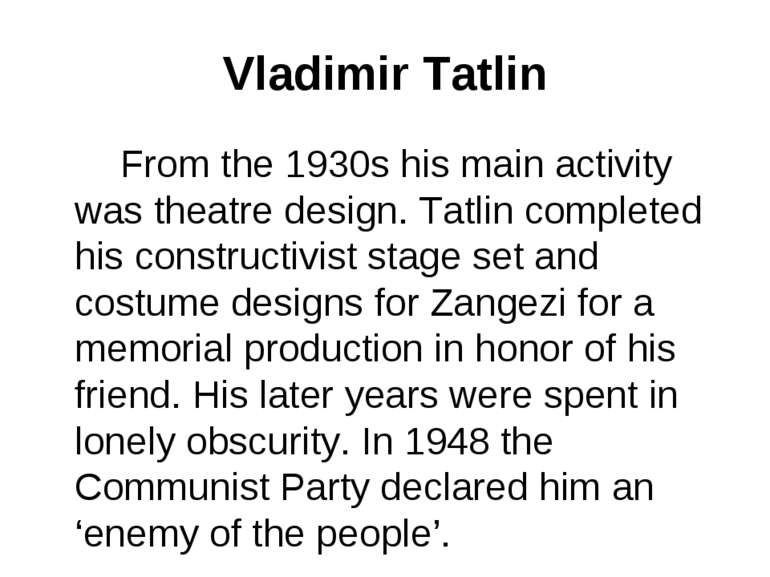
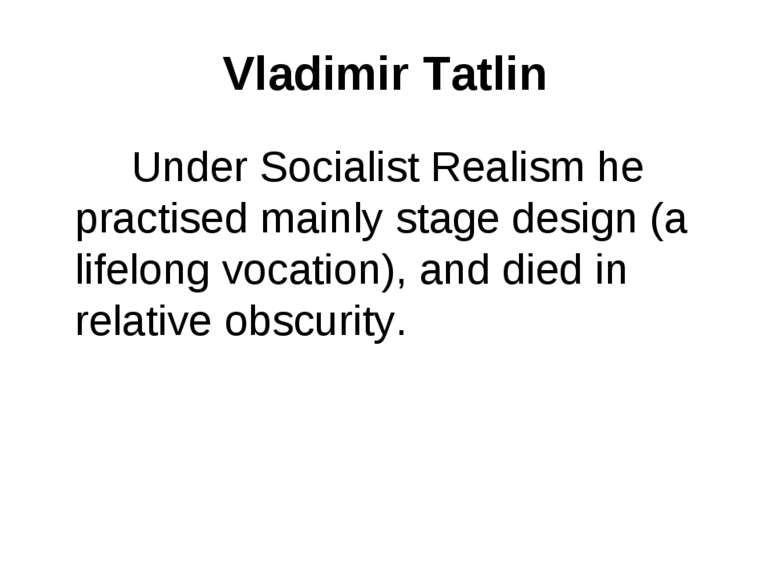
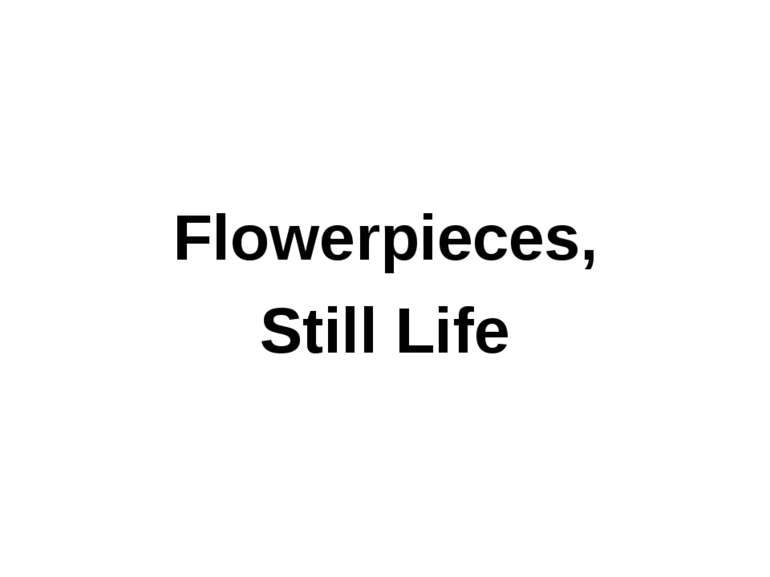
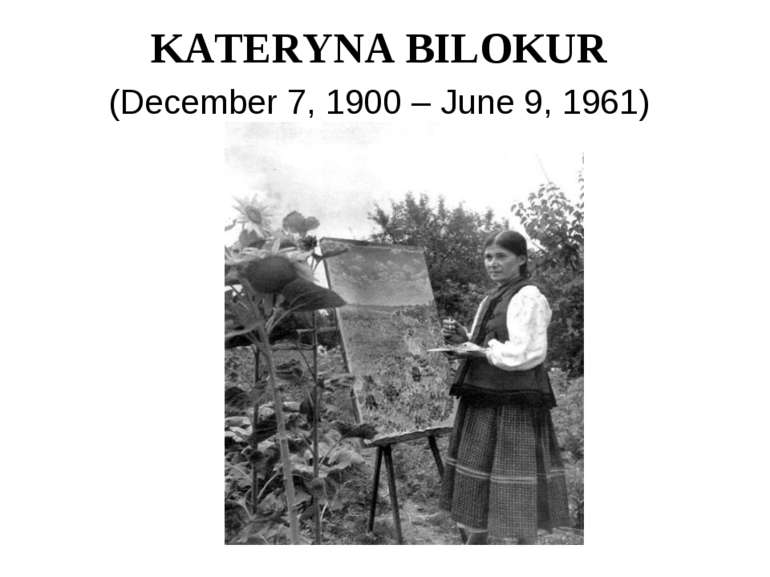

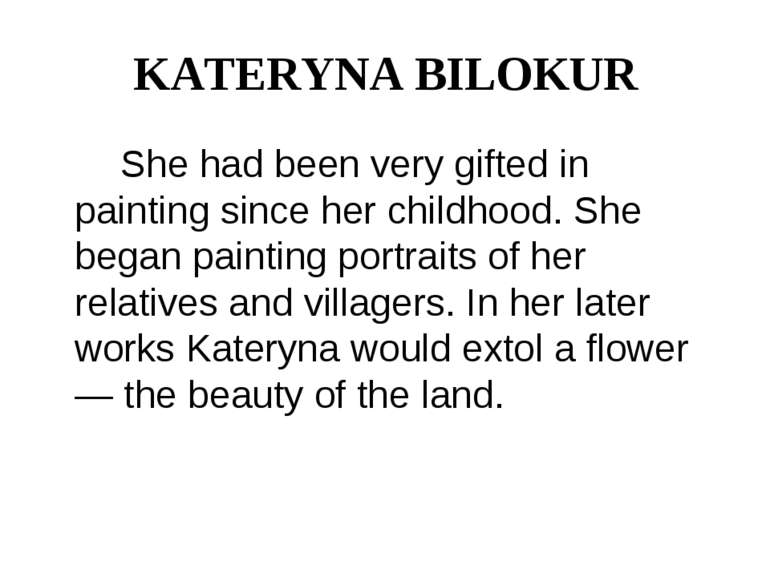
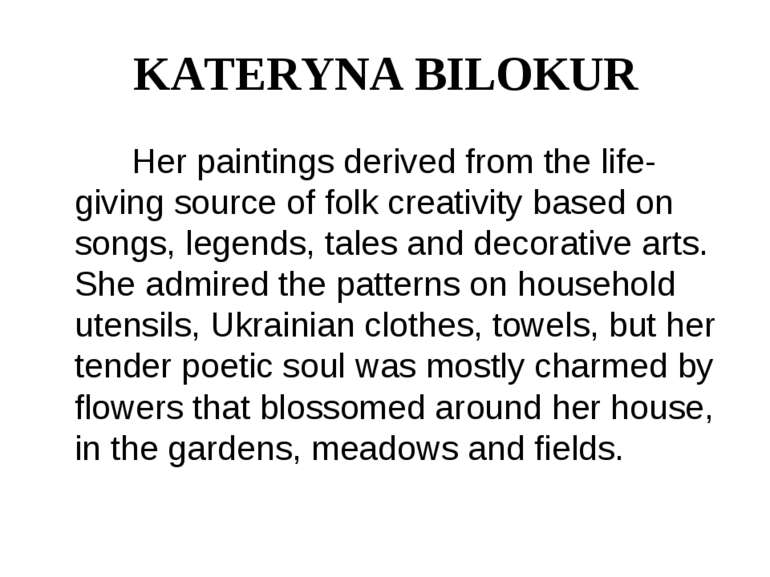
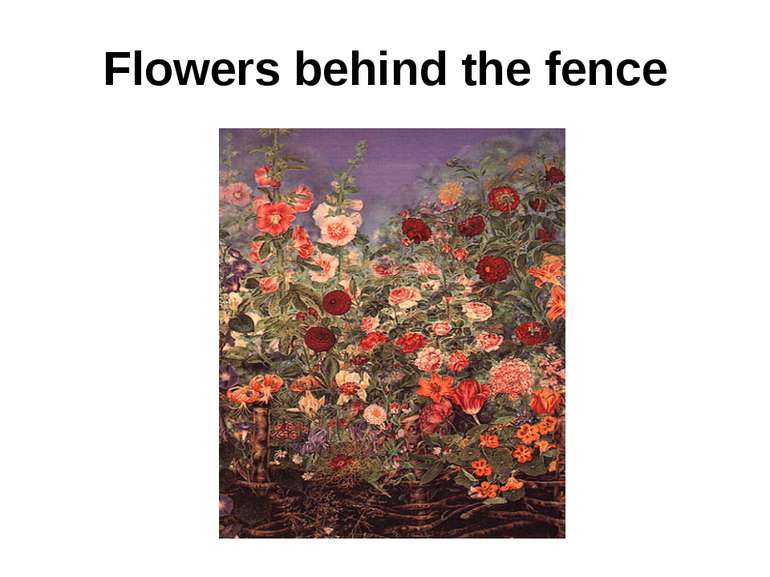
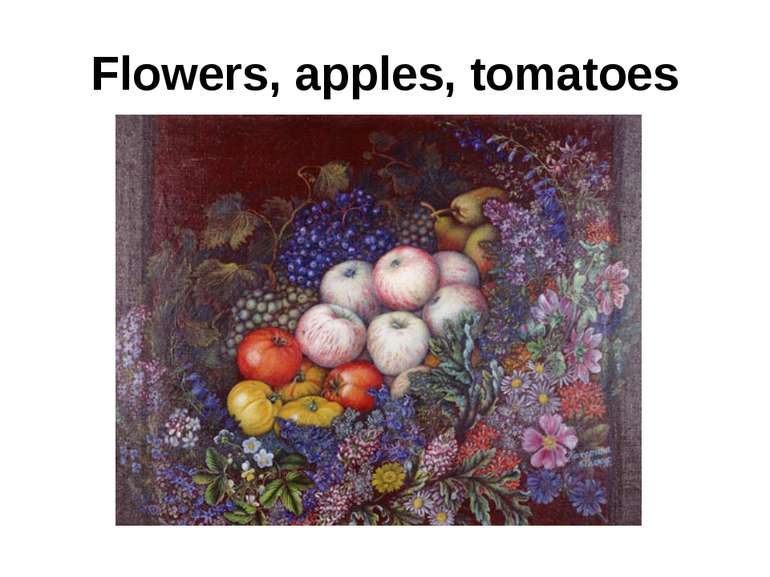
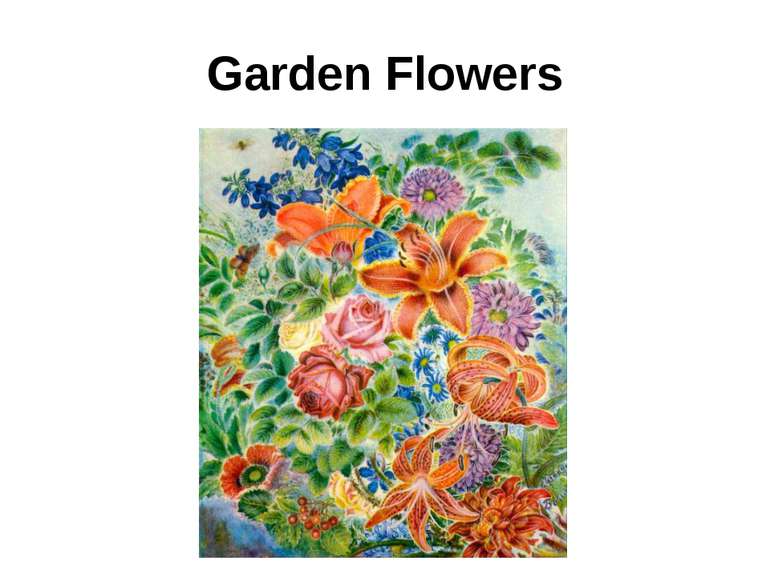
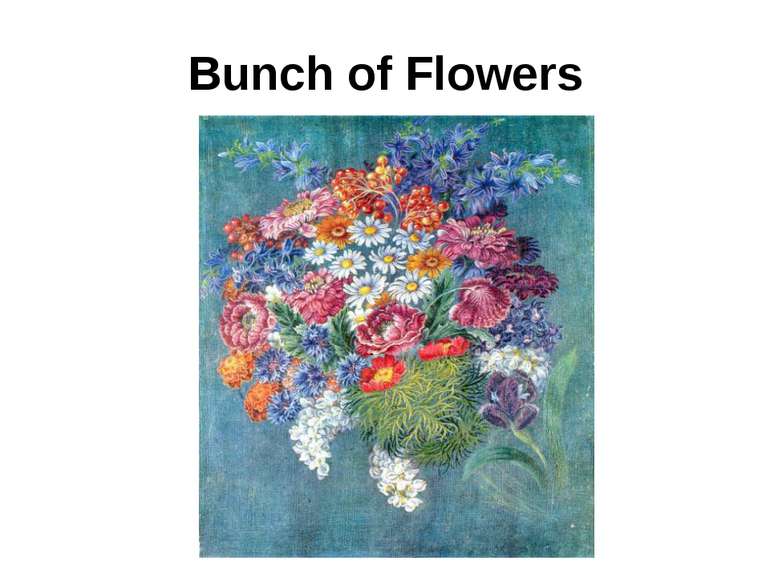
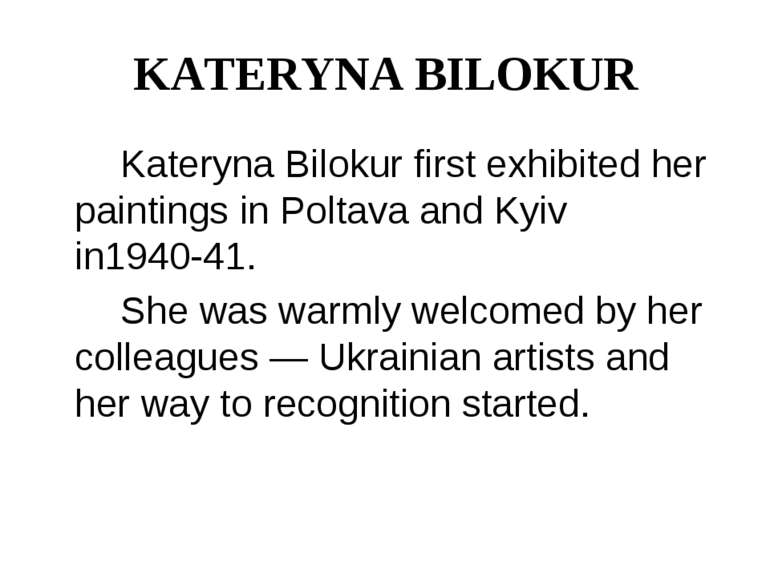
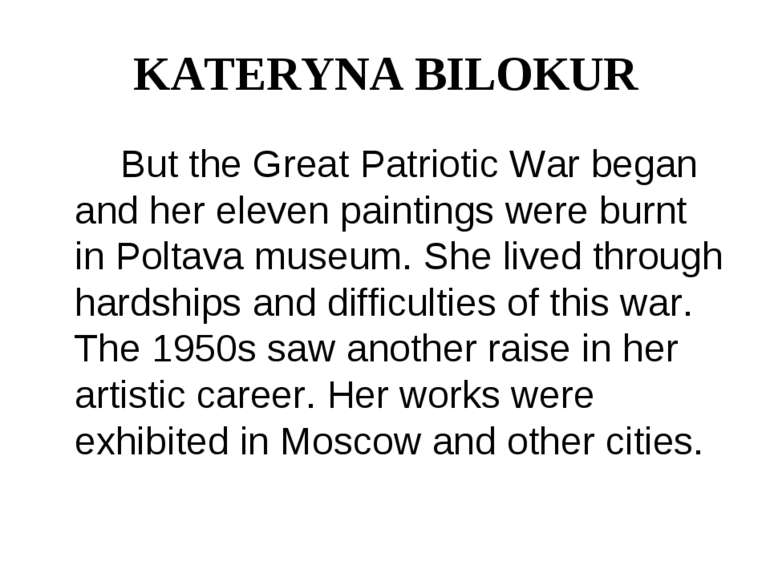
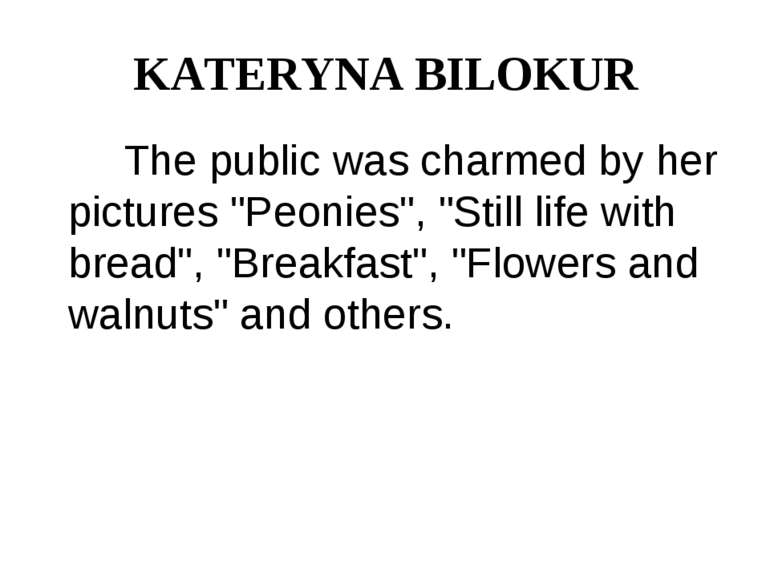
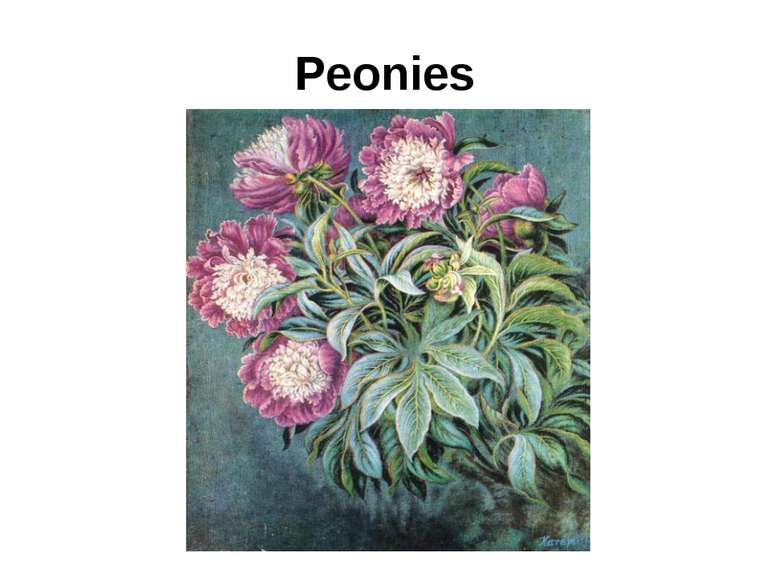
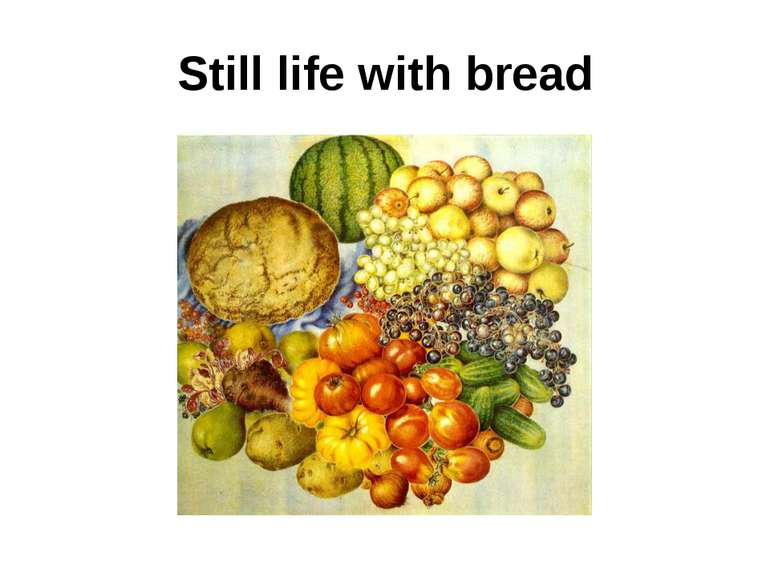
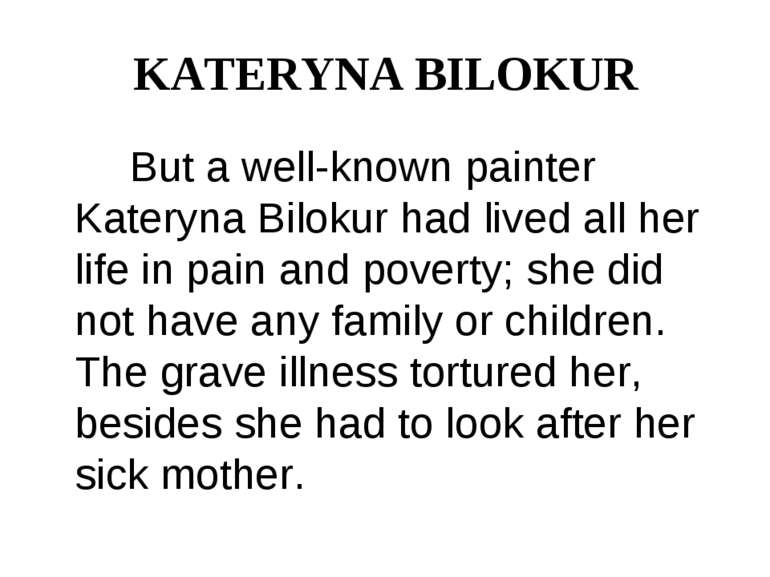
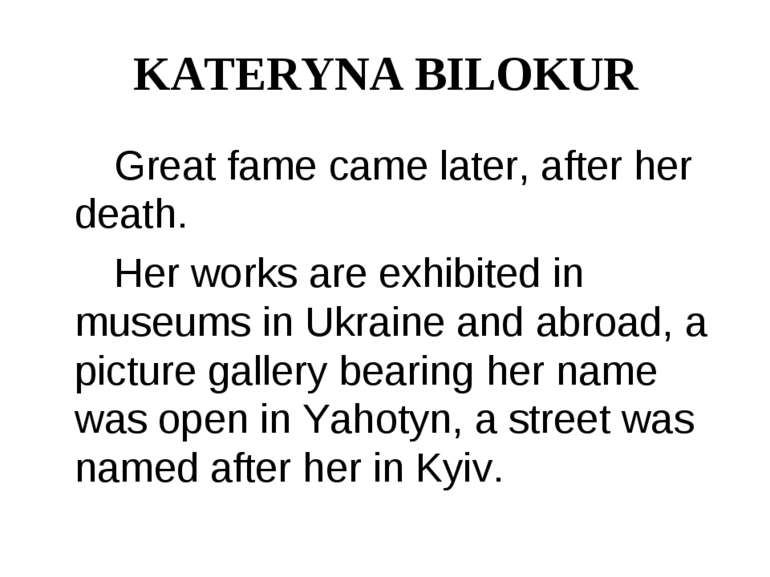
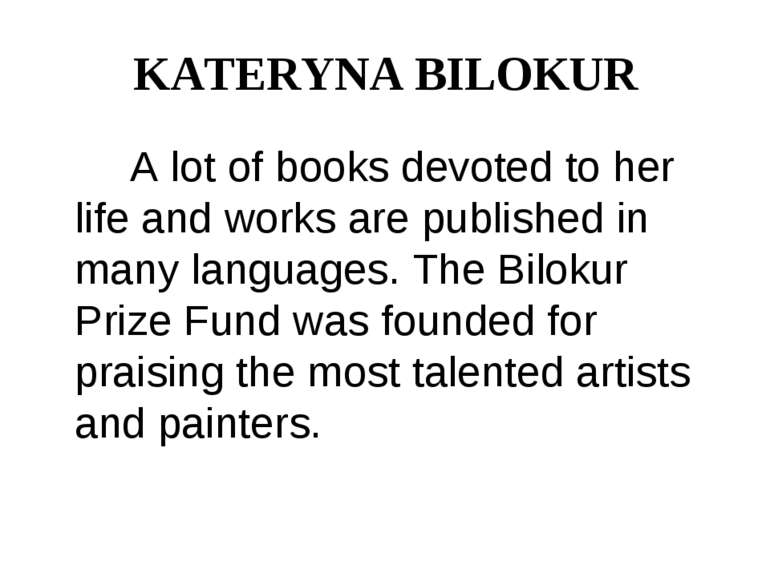
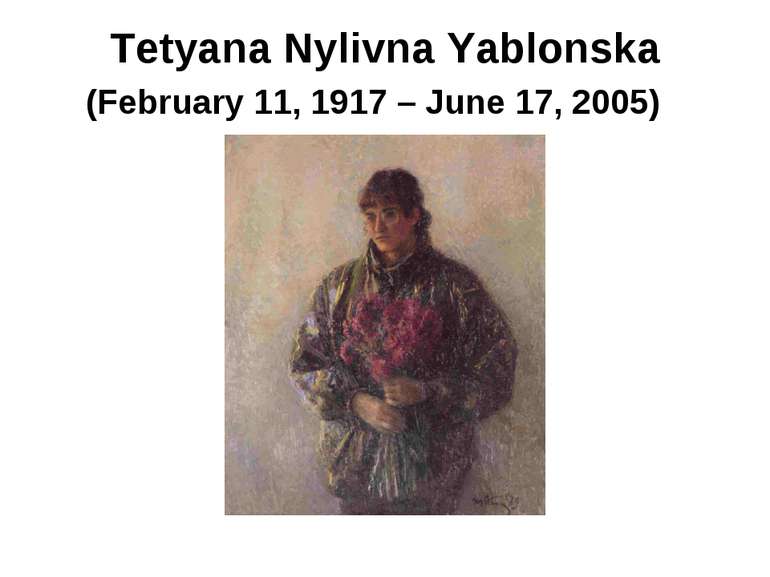
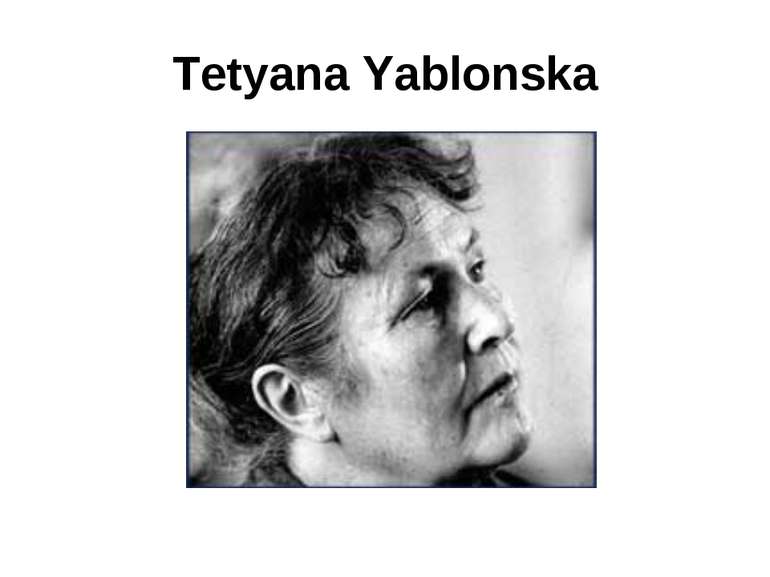
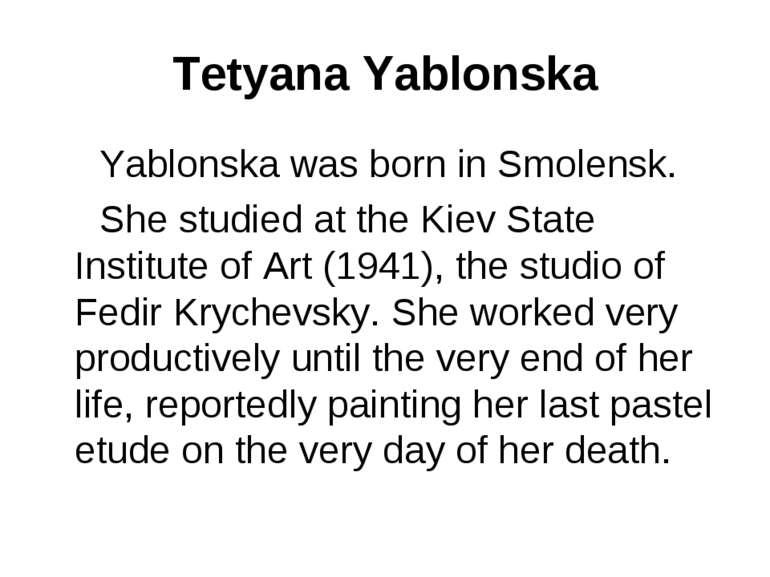
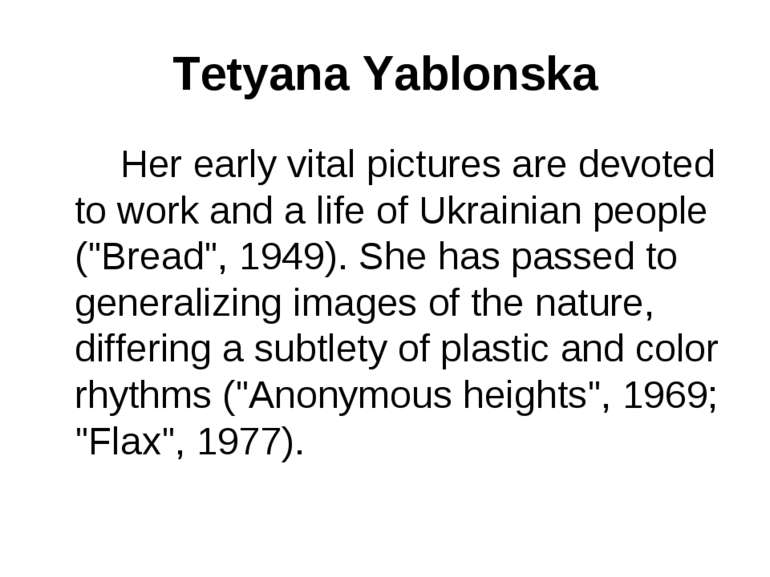
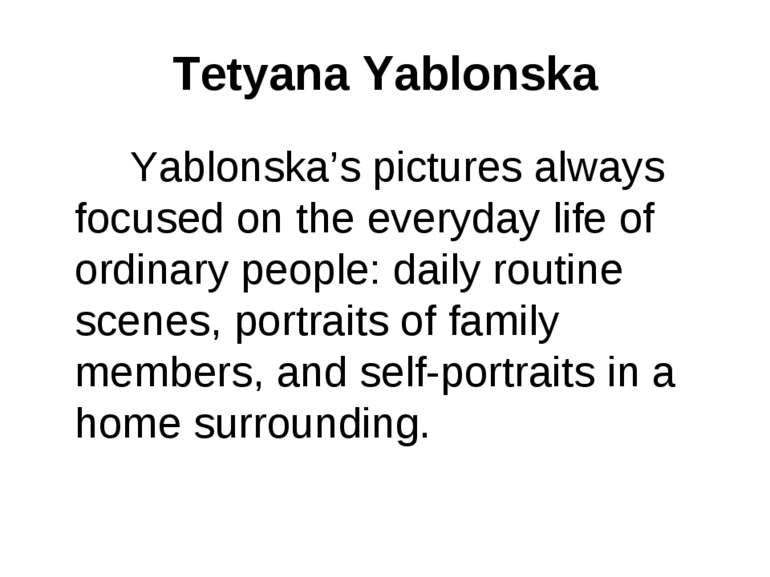
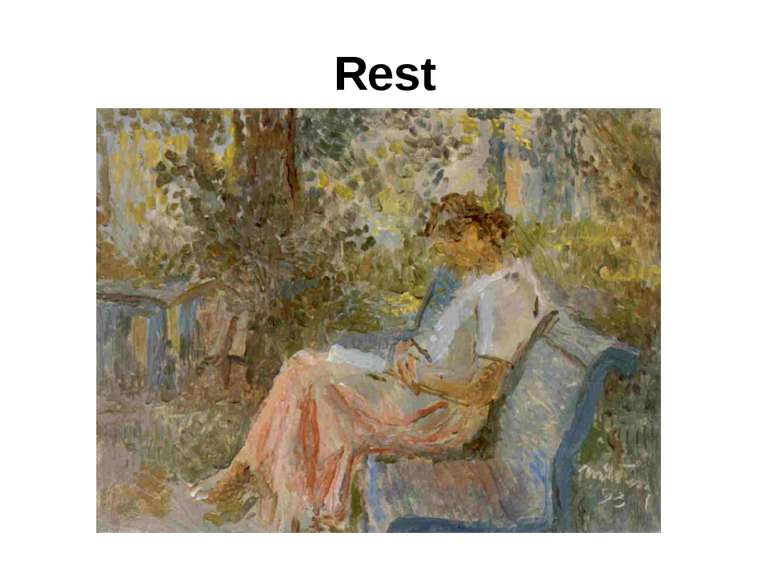
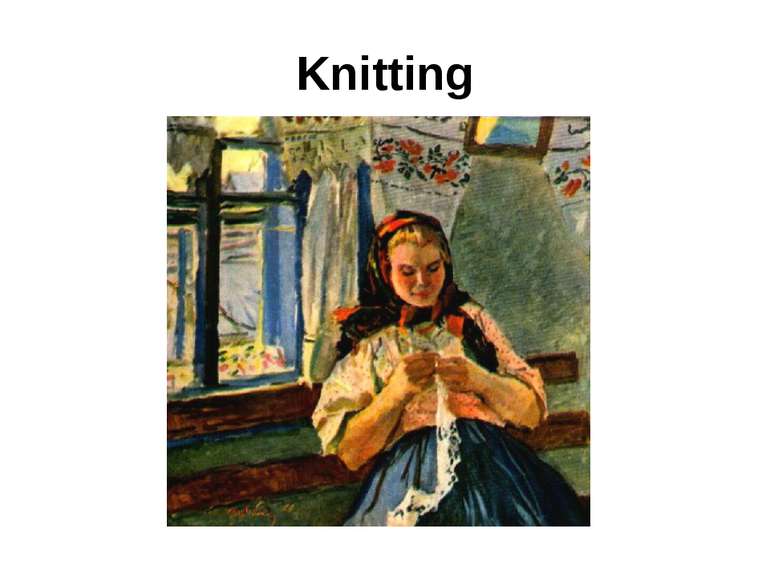
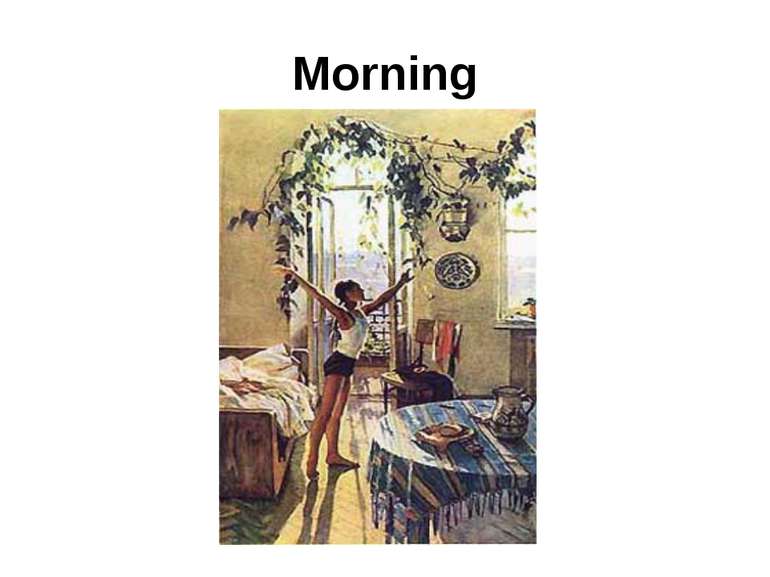
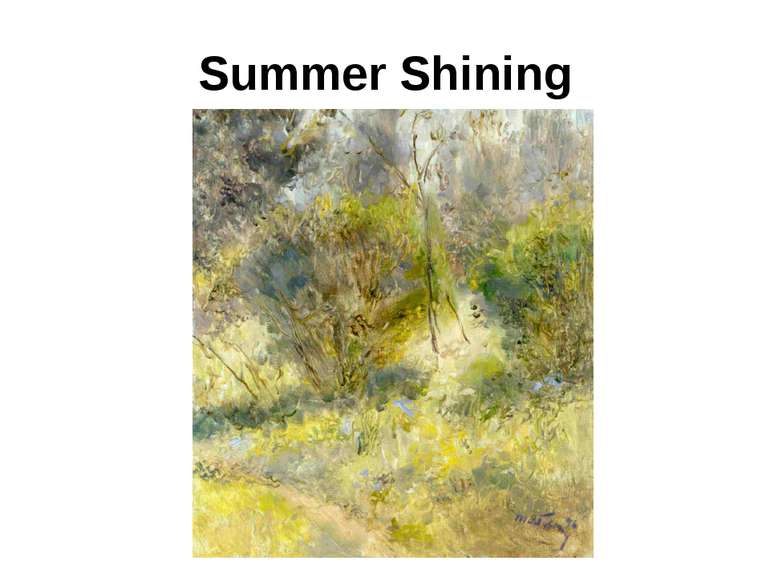
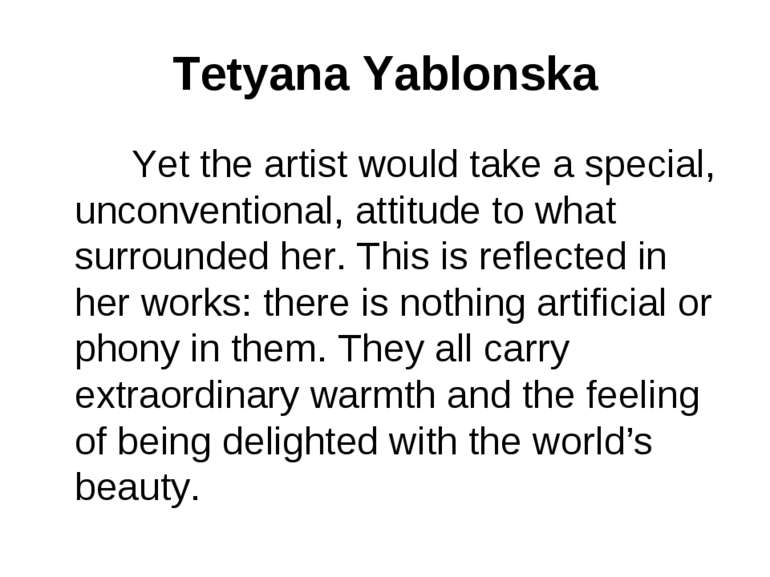
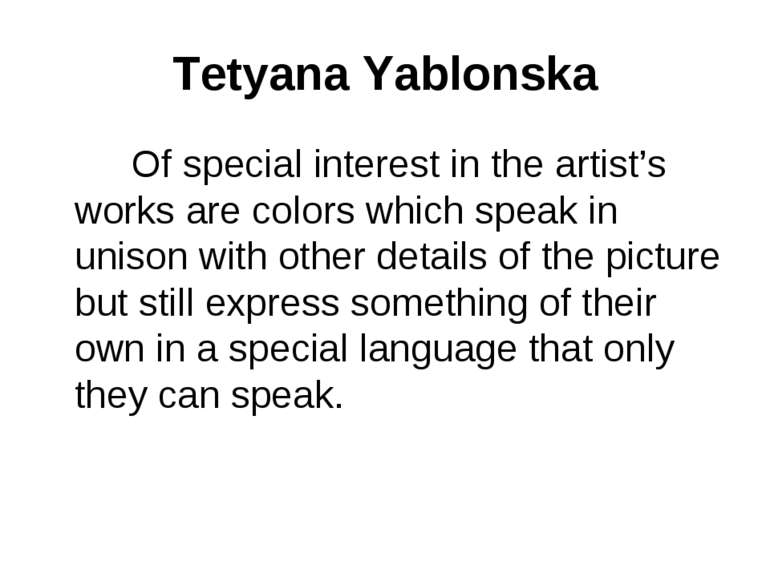
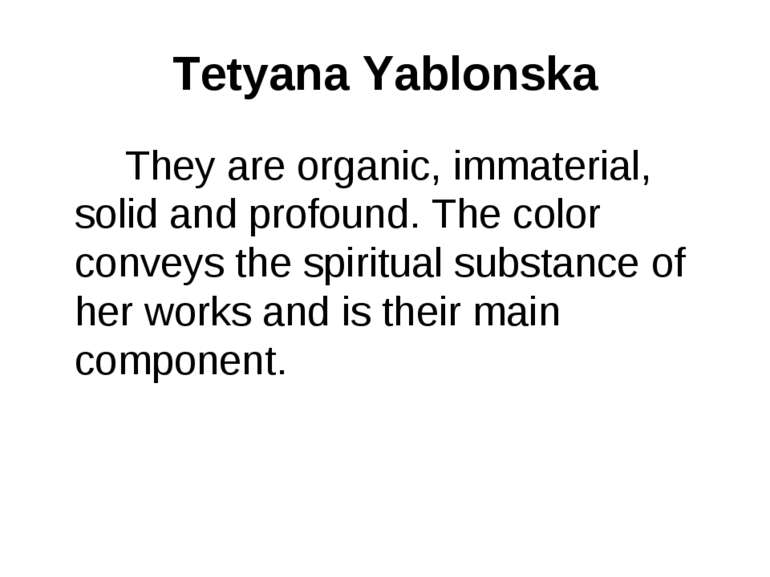
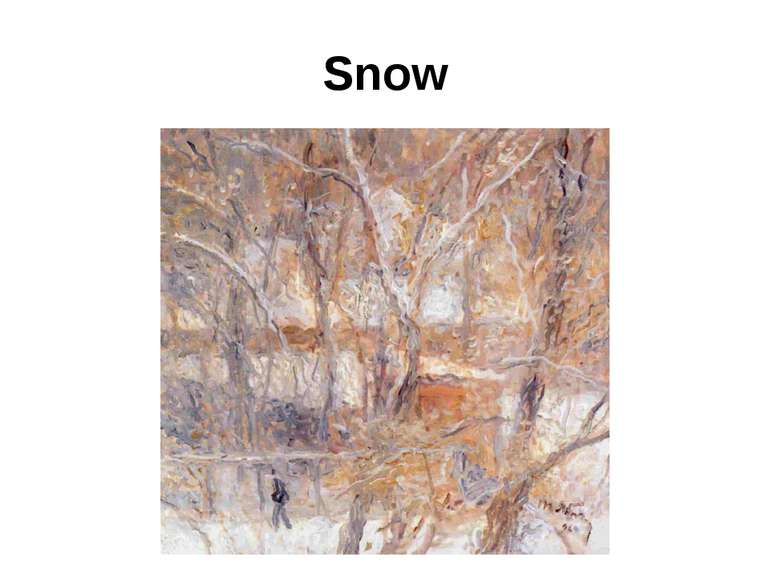
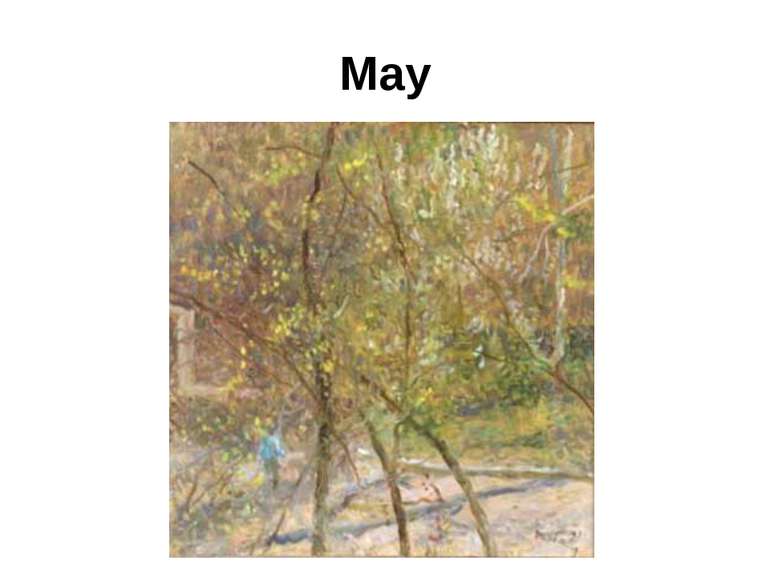
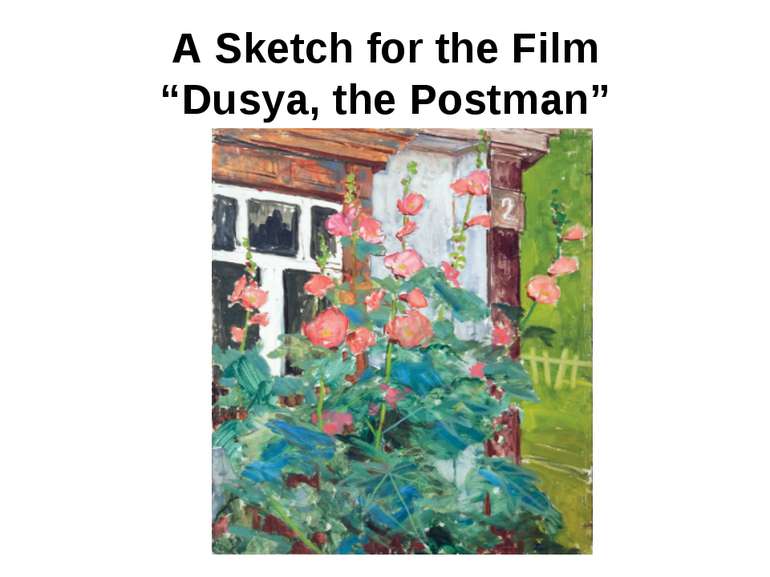
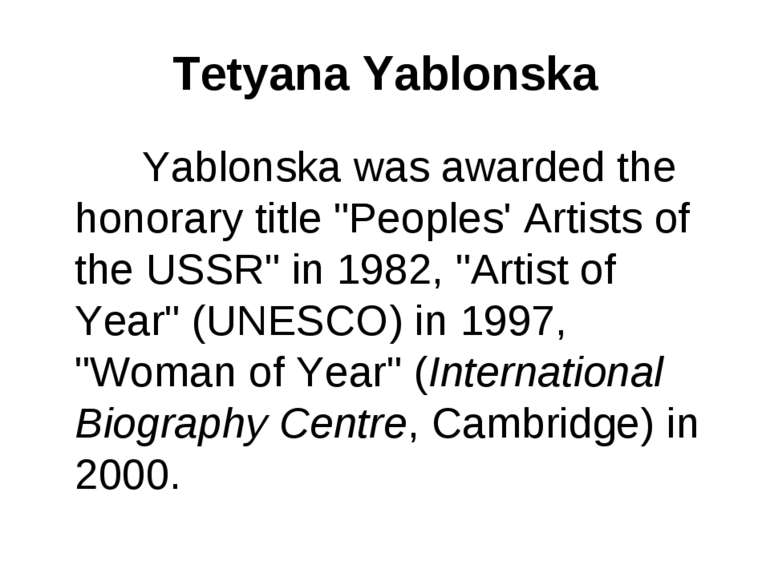
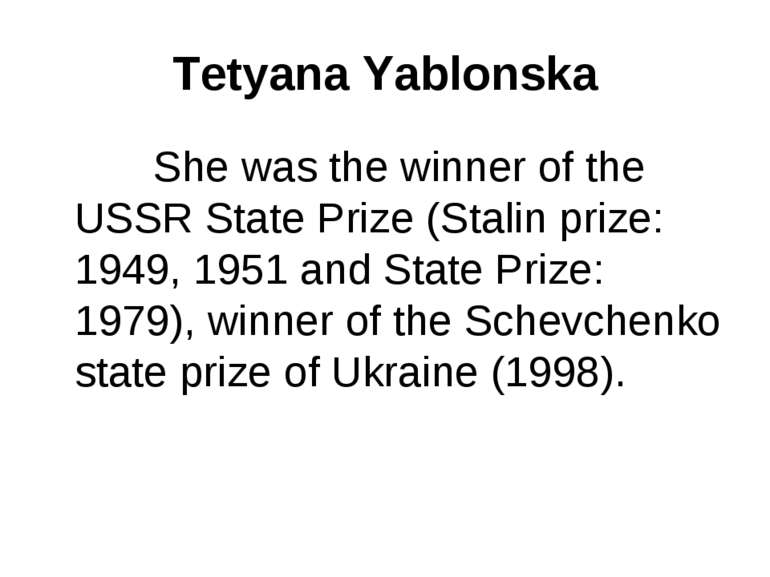
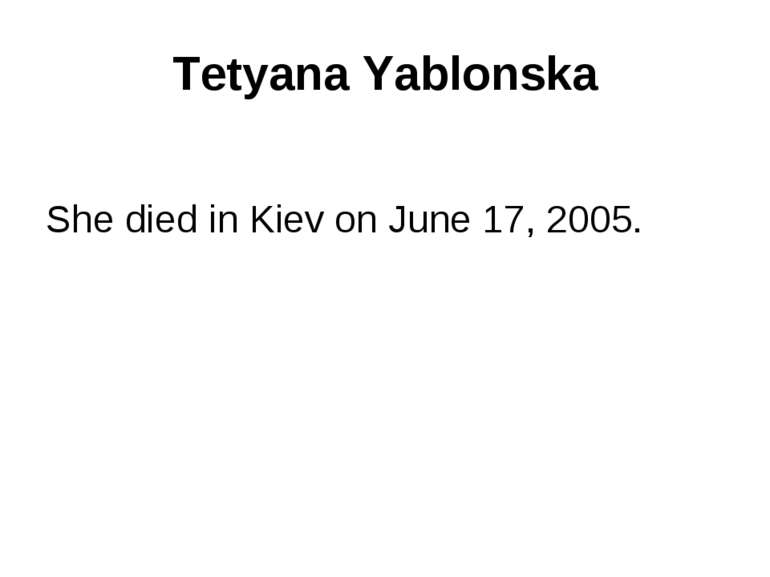
















































































































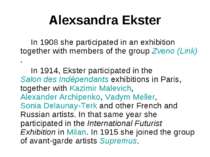












![Vladimir Yevgrafovich Tatlin (December 28 [O.S. December 16] 1885 – May 31, 1... Vladimir Yevgrafovich Tatlin (December 28 [O.S. December 16] 1885 – May 31, 1...](https://svitppt.com.ua/images/38/37735/210/img125.jpg)

